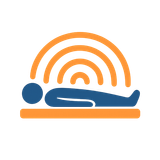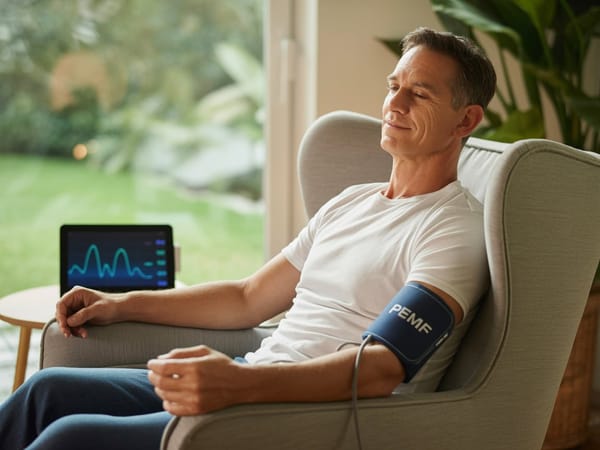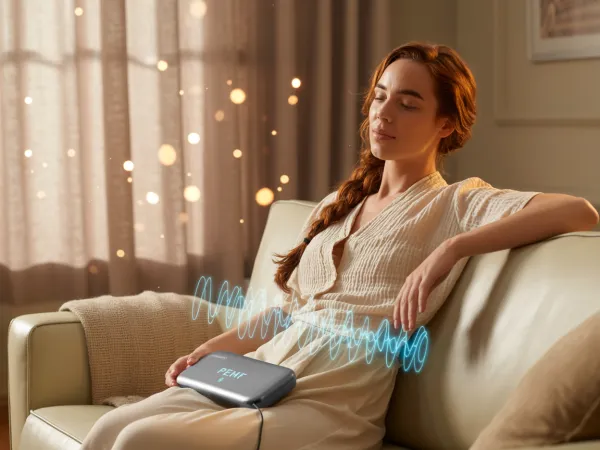Is PEMF the Same as Grounding?
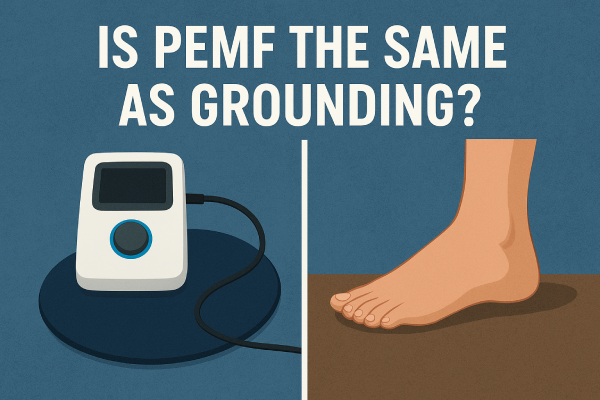
What is the Core Difference Between PEMF and Grounding?
PEMF and grounding are not the same. They operate on entirely different principles. PEMF therapy uses a powered device to generate a pulsed electromagnetic field. This technology actively stimulates the body's cells. The goal is to encourage healing and reduce pain. Think of it as a cellular exercise machine.
In contrast, grounding is a passive process. It involves connecting your body directly to the Earth's surface. This can be done by walking barefoot or using a special conductive mat. The idea is to absorb the Earth's natural, gentle energy. This therapy grounding aims to balance your body's electrical state.
One is an active, technological intervention. The other is a passive, natural connection. The effects and applications of each wellness practice differ greatly because of this fundamental distinction. Understanding this helps users choose the right therapy for their needs.
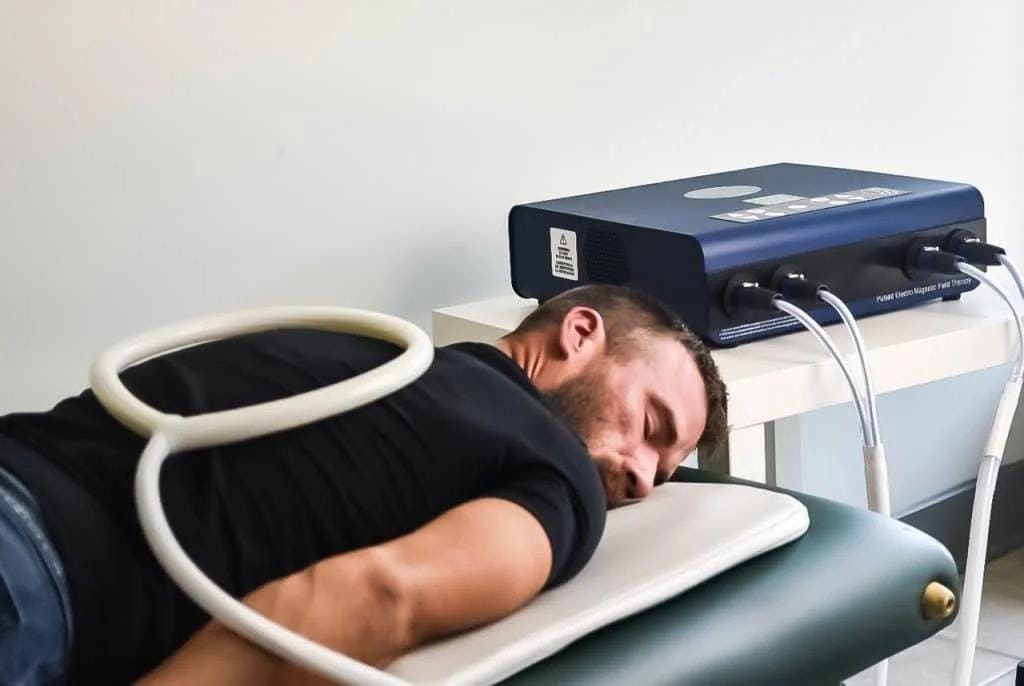
How Does PEMF Technology Work?
The Science Behind Electromagnetic Field Therapy
PEMF technology works by sending targeted energy waves into the body. A device creates controlled electromagnetic fields. These fields are not static; they pulse at specific frequencies. This pulse is key to its therapeutic effects. The frequencies can be adjusted for different conditions. This is a core part of PEMF therapy.
For example, a 2024 study found that a 1 mT, 50 Hz signal significantly improved knee muscle strength. The energy from the PEMF device passes through the skin and deep into tissues. It excites cells and influences ion channels. This process can improve circulation, reduce inflammation, and accelerate the body's natural recovery processes.
Key PEMF Benefits:
- 51% of human cell experiments show observable changes from PEMF
- Targeted treatment for specific medical conditions
- FDA approval for non-union fractures
- Strong safety record with decades of research
A meta-analysis showed that 51% of human cell experiments demonstrate observable changes from PEMF. It is a non-invasive method with a strong safety record, supported by decades of research.
What is the Science Behind Grounding?
Understanding Earth's Natural Energy Connection
Grounding, also known as earthing, works through direct electrical contact with the Earth. The Earth holds a natural negative charge. When your body makes contact, it absorbs free electrons. This is the central theory. These electrons are believed to act as antioxidants.
They may help neutralize free radicals, which are unstable molecules that cause damage and inflammation. One comprehensive review details this electron transfer as a key anti-inflammatory mechanism. The human body is conductive. This allows the Earth's energy to spread through our tissues.
Grounding Mechanism:
- Direct electrical contact with Earth's surface
- Absorption of free electrons from the Earth
- Natural 7.83 Hz frequency (Schumann resonance)
- Stabilizes internal bioelectrical environment
This connection to the Earth's direct current (DC) circuit and its natural 7.83 Hz frequency, the Schumann resonance, is thought to help stabilize our internal bioelectrical environment, promoting a state of balance and calm.
Can a Grounding Mat Offer the Same Benefits?
A grounding mat attempts to replicate the effects of walking barefoot on the Earth. It does this from inside your home. These mats use conductive materials, like carbon or silver threads. A wire connects the mat to the ground port of an electrical outlet. This connects you to the Earth's electrical field, not the live current.
2025 Research Findings:
A 2025 double-blind, placebo-controlled study showed that using a grounding mat significantly improved sleep and reduced stress.
However, the benefits are not the same as those from a PEMF mat. Grounding mats provide a passive, continuous flow of electrons. They do not generate active magnetic fields. Their primary benefits are linked to reducing inflammation and improving sleep. They are excellent for general wellness.
How Do PEMF Mats Differ from Grounding Mats?
PEMF Mats
- Active device requiring power source
- Generate specific, pulsed magnetic fields
- Targeted therapeutic electromagnetic energy
- Shorter sessions (15-30 minutes)
- Adjustable frequencies and intensities
Grounding Mats
- Passive device using grounded outlet
- Connect to Earth's natural energy field
- Restore natural electrical balance
- Can be used for hours or overnight
- No electricity generation - just connection
How Does a PEMF Device Address Pain?
A PEMF device offers a targeted approach to managing pain. The pulsed electromagnetic fields it produces can penetrate deep into the body. This targeted energy helps reduce inflammation at a cellular level. It also improves circulation, bringing more oxygen to the affected area and removing waste products. This supports the healing process.
2025 Clinical Trial Results:
A major 2025 clinical trial with 120 patients found that PEMF therapy resulted in a 36% pain reduction. This was significantly better than the 10% reduction seen in the control group. Furthermore, users of PEMF therapy reduced their reliance on pain medication by 55%.
What Are the Main Benefits of Each Therapy?
The benefits of PEMF and grounding are distinct. PEMF therapy excels at targeted treatment. It is used for specific medical issues like non-union fractures, for which it has FDA approval. It also shows strong evidence for improving functional capacity and managing chronic pain. The benefits are supported by robust clinical research.
Grounding, on the other hand, offers more systemic wellness benefits. It is highly accessible and affordable. Studies show it can significantly reduce blood viscosity by 273% and lower stress. The main benefits of grounding revolve around reducing chronic inflammation, improving sleep, and balancing the autonomic nervous system.
PEMF Therapy Benefits
- FDA approval for non-union fractures
- 36% pain reduction in clinical trials
- 55% reduction in pain medication reliance
- Improved functional capacity
- Targeted treatment for specific conditions
- Enhanced circulation and healing
Grounding Benefits
- 273% reduction in blood viscosity
- Significant stress reduction
- Improved sleep quality
- Reduced chronic inflammation
- Balanced autonomic nervous system
- Highly accessible and affordable
PEMF is a focused medical treatment. Grounding is a holistic wellness practice.

Are There Safety Concerns with PEMF or Grounding?
Both therapies have excellent safety profiles, but some precautions are necessary.
PEMF Safety Profile
PEMF therapy is very safe, with a clinical trial adverse event rate of only 3.3%. A large survey found that 79% of users reported no side effects.
!Contraindications: Not recommended for pregnant women, people with pacemakers, or children. Consult healthcare providers before use.
As one medical authority states, PEMF is "considered to be a safe and non-invasive way to effectively treat numerous musculoskeletal disorders."
Grounding Safety Profile
Grounding is also very safe. The main risks come from the environment, like stepping on a sharp object outdoors.
!Precautions: Individuals on blood thinners or specific medications should consult a doctor before starting grounding therapy.
Dr. Susan Albers of the Cleveland Clinic notes that while connecting with nature is beneficial, people should use caution in outdoor environments.
Which Therapy is Better for Sleep and Stress?
For sleep and stress, the research points strongly toward grounding. A 2025 study found that using earthing mats led to significant improvements in insomnia severity and reduced stress levels. The mechanism is thought to involve the normalization of cortisol, the body's main stress hormone.
Grounding for Sleep & Stress:
- Significant improvements in insomnia severity
- Normalization of cortisol levels
- Reset of natural sleep-wake cycle
- Safe, accessible, and cost-effective strategy
Grounding may help reset the natural sleep-wake cycle. While some people use low-frequency PEMF programs for relaxation, its primary application is not sleep or stress. Grounding therapy provides a simple, non-invasive method to calm the nervous system.
As one study notes, grounding presents a "safe, accessible, and cost-effective strategy" for alleviating anxiety. This makes it a very appealing option for those seeking natural solutions for sleep and stress.
How to Choose Between PEMF and Grounding
Making the right choice depends on your specific wellness goals, budget, and preferences. Follow these steps to determine which therapy is best suited for your needs.
Assess Your Primary Goal
Determine if you are seeking targeted, high-intensity treatment for a specific condition (favors PEMF) or a general, holistic wellness practice to reduce inflammation and improve sleep (favors grounding).
- Choose PEMF if: You have specific medical conditions, chronic pain, or need targeted tissue healing
- Choose Grounding if: You want overall wellness, better sleep, stress reduction, or general inflammation control
Consider Your Budget and Accessibility
Evaluate the costs. Grounding can be free by having direct contact with the earth, while grounding products are relatively inexpensive. PEMF devices represent a more significant financial investment.
- Grounding costs: Free (barefoot outdoors) to $50-200 (grounding mats/sheets)
- PEMF costs: $500-5000+ for home devices, $50-100 per professional session
Evaluate the Technology vs. Nature Aspect
Decide if you prefer a technology-driven, controlled application of electromagnetic fields (PEMF) or a natural, passive connection with the Earth's energy (grounding).
- PEMF: Controlled, adjustable, device-dependent technology
- Grounding: Natural, simple, no-device-needed approach
Consult a Healthcare Professional
Before starting any new therapy, especially PEMF, consult with a doctor or qualified healthcare provider to ensure it is safe and appropriate for your individual health situation.
- Discuss your specific health conditions and medications
- Review contraindications for each therapy
- Consider integrating both approaches if appropriate
Conclusion: Making the Right Choice for Your Health
In summary, PEMF and grounding are distinct yet complementary paths to better health. They are not the same. PEMF therapy is an active, technology-driven treatment. It is supported by strong clinical evidence for targeted applications like pain management and tissue healing. It is an excellent choice for addressing specific medical conditions.
Grounding is a passive, natural practice focused on systemic wellness. It is highly accessible and offers broad benefits for reducing inflammation, stress, and improving sleep.
Key Takeaways:
- PEMF: Best for targeted medical treatment, specific conditions, and acute pain management
- Grounding: Ideal for general wellness, sleep improvement, and stress reduction
- Safety: Both have excellent safety profiles with minimal side effects
- Cost: Grounding is more accessible; PEMF requires larger investment
- Complementary: Both can be used together for comprehensive wellness
Your choice depends on your goals. If you need to treat a specific injury or chronic condition, PEMF may be the more effective option. Consult a healthcare provider to see if it is right for you. If you are looking to enhance your overall wellness, reduce daily stress, and improve your sleep, grounding is a simple and powerful tool. You can even use both to support your body in different ways.
